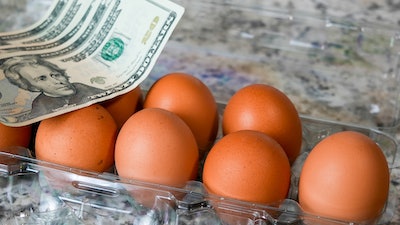
According to Jeff Cutler, Cooper Farms Egg Division Director, Cooper Farms started its cage-free conversion process in 2018 by looking at what was going on in the market, the consumers driving it and the legislative changes were taking place.
Cage-free demand and the investment
Today, Cooper Farms produces 50% cage free and 50% conventional eggs. By the summer of 2025, it expects to be producing 60% cage free and 40% conventional.
Only a small part of Cooper Farms was cage free in 2018 when it first started its transition plan. However, Cutler knew he didn't want to over produce cage-free eggs due to the large investment and unknown demand.
“We wanted to stay balanced between caged and cage-free production, and we still do to this day. There is still consumer demand for conventional eggs,” he said.
Cooper Farms began its cage-free conversion plan by evaluating its contract producers and partners that had barns eligible to convert or by building new cage-free barns from the ground up.
According to Cutler, Cooper Farms evaluated eligibility by assessing the age of the barn, barn size and its ability to economically convert to cage free. Additionally, the producer assessed the grower’s generational potential, and if they had children that wanted to continue farming.
“As we felt more confident in the market, as far as consumer demand and acceptance, we felt that the next step would be to partner with families here in West Central Ohio and embark on building a cage-free complex.”
Following consumer demand and legislative changes in various states, while finding long-term production and sales partners, were all important pieces in determining how quickly Cooper Farms’ cage-free conversions could take place.
“You have to adapt if you want to sell into certain markets,” said Cutler.
The challenges of converting to cage free
Cutler said the challenges that Cooper Farms experienced during the process were mostly due to supply chain issues, a lasting effect of the COVID-19 pandemic.
“A lot of our equipment is manufactured overseas in Europe, so there were concerns of ocean freight availability,” he said. “While many things are returning to the way they were pre-covid, lead times are the new normal and it’s something we just have to plan for.”
Additionally, the price of goods has significantly increased since the beginning of Cooper Farms’ journey in 2018. Cutler said there had been a 30-40% increase in material costs in the last five years.
“As long as consumer demand calls for both caged and cage-free eggs, we’ll keep supplying both. However, our expansion plan is focused on cage-free production.”
Like Cooper Farms, many U.S. egg producers are working towards converting at least a share of their production to cage free. This is due to a mixture of customer pledges and legislation, such as California’s Proposition 12, being implemented. In some cases, this cage-free shift is forcing smaller egg producers to invest millions of dollars to convert or go out of business.


















